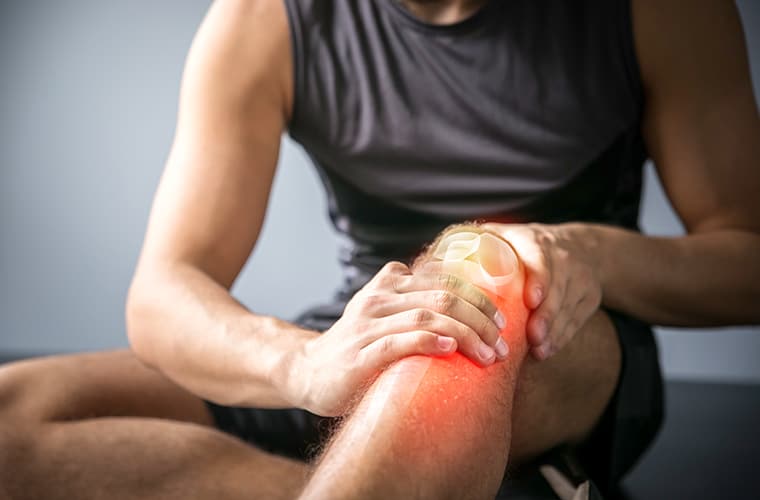
It might not seem intuitive, but there are exercises that can help reduce knee pain. While resting is an essential part of recovering from knee pain, restoring strength is a vital part of helping with pain relief.
After a knee injury, most physicians and physical therapists recommend gentle exercise to strengthen the surrounding muscles. This may include avoiding some weight-bearing exercises or moves that compress the knee. Fortunately, isometric exercises are extremely low-impact and great for rapidly strengthening the muscles. Studies have shown that isometric exercises are extremely effective at targeting the muscle groups surrounding the knee.
For some exercises that may help relieve knee pain, check out the isometric exercises below. These exercises are low-impact, intuitive, and require little to no equipment–in other words, the best exercises for knee pain.
Anatomy of the Knee
The knee is made up of four bones: the femur, the tibia, the fibula and the patella. The femur is the large bone in the thigh, the tibia is the shin bone, the fibula runs along the side of the fibula and the patella is known as the kneecap. Knee function is supported by surrounding groups of large muscles like the quadriceps in the front, and the glutes and hamstrings in the back. Four ligaments support the knee joint and help keep it stable.
Your Target Muscles After a Knee Injury
Here are the muscle groups that you should focus on strengthening:
- Hamstrings
- Quadriceps
- Abductors
- Adductors
- Glutes
Before You Get Started
- Always get guidance from a medical professional prior to starting any exercise program. This is not intended to act as medical advice, and you shouldn’t disregard professional medical advice or delay in seeking it because of something you read here.
- Always warm up before an exercise.
- Slow and steady wins the race. Don’t push yourself through an exercise if it’s too difficult.
- There’s a difference between pain and discomfort. These exercises should not create any type of pain in the knee. If you feel pain, you should stop the exercise immediately. You may feel your muscles get sore or tired during or after ther exercises.
- You may feel your muscles get sore or tired during or after an exercise, but it shouldn’t be painful afterwards. Take plenty of rest in the days between your workouts.
- Remember to perform the relief exercises on both legs.
Exercises
Half Squat
Muscles worked: Quadriceps, glutes, hamstrings
- Get in a standing position, feet shoulder-width apart
- Squat back like you’re about to sit in a chair
- Keep your knees over your ankles
- If you have an Activ5, press your right heel into the device as you squeeze your glutes
- Hold the back of a chair for balance if needed
- Push through the heels to stand back up

Clamshell
Muscles worked: Glutes and quads
- From a seated position, keep both feet touching the ground
- Straighten your back and pull your shoulders back
- With your toes pointing out, squeeze back of your heels together for 15 seconds
- If you’re using an Activ5, place the device sideways between your heels and squeeze
- Make sure you’re engaging your inner thighs

Leg Press
Muscles worked: Core, glutes, hip flexors, abductors & adductors, quads, hamstrings
- From a seated position, keep your feet on the ground
- Straighten up and pull your shoulders back
- Press your left heel into the ground for 15 seconds
- If you have an Activ5, press the device into the floor with your heel
- Repeat with the other leg

Pistol Squat Crush
Muscles worked: Glutes, hip flexors, abductors & adductors, quads, hamstrings
- From a seated position, extend your left straight out in front of you
- With your right leg still bent, press your heel down while squeezing your glutes
- If you’re using an Activ5, press your right heel down
- Squeeze for 15 seconds
- Repeat for the other leg

Isometrics does more than help with knee pain. To learn more about the benefits of isometrics, and to get started with the Activ5 isometric training device, visit our website. Or better yet–download our Activ5 Training App for Android or iOS to access incredible isometric workouts for the entire body.
